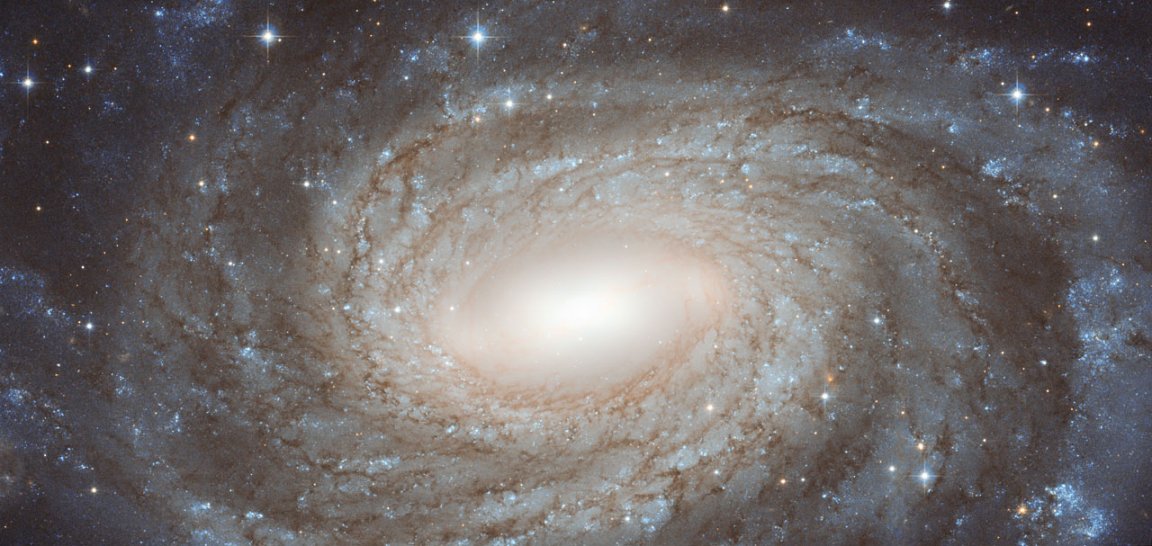

This beautiful blue-black galaxy can be found approximately eighty million light-years from Earth in the constellation of Ophiuchus. It is spiral in nature (technically, it’s morphologically classified as an SAB(r)bc galaxy, meaning it is weakly-barred, with loosely wound spiral arms, and a distinct inner-ring structure), and much larger than you might imagine—spanning more than 150,000 light-years across (making it about 50 percent larger than the Milky Way galaxy).
This image, taken with the sharp eye of the Hubble Space Telescope, zeroes in on the bright central core of NGC 6384, which is believed to extend about 70,000 light-years across. A wide-variety of the galaxy’s features are represented in this small section of the galaxy, including its dusty spiral arms, clusters of hot blue-white stars, numerous HII regions, and the older generations of stars that give the core its off-white glow.
Most of the largest dots you see here don’t belong to NGC 6384. Rather, they are much closer to us, found within the confines of the Milky Way. You can distinguish them from the others by looking for the small crosses—artifacts of the telescope used to capture the image.
See a larger image here.